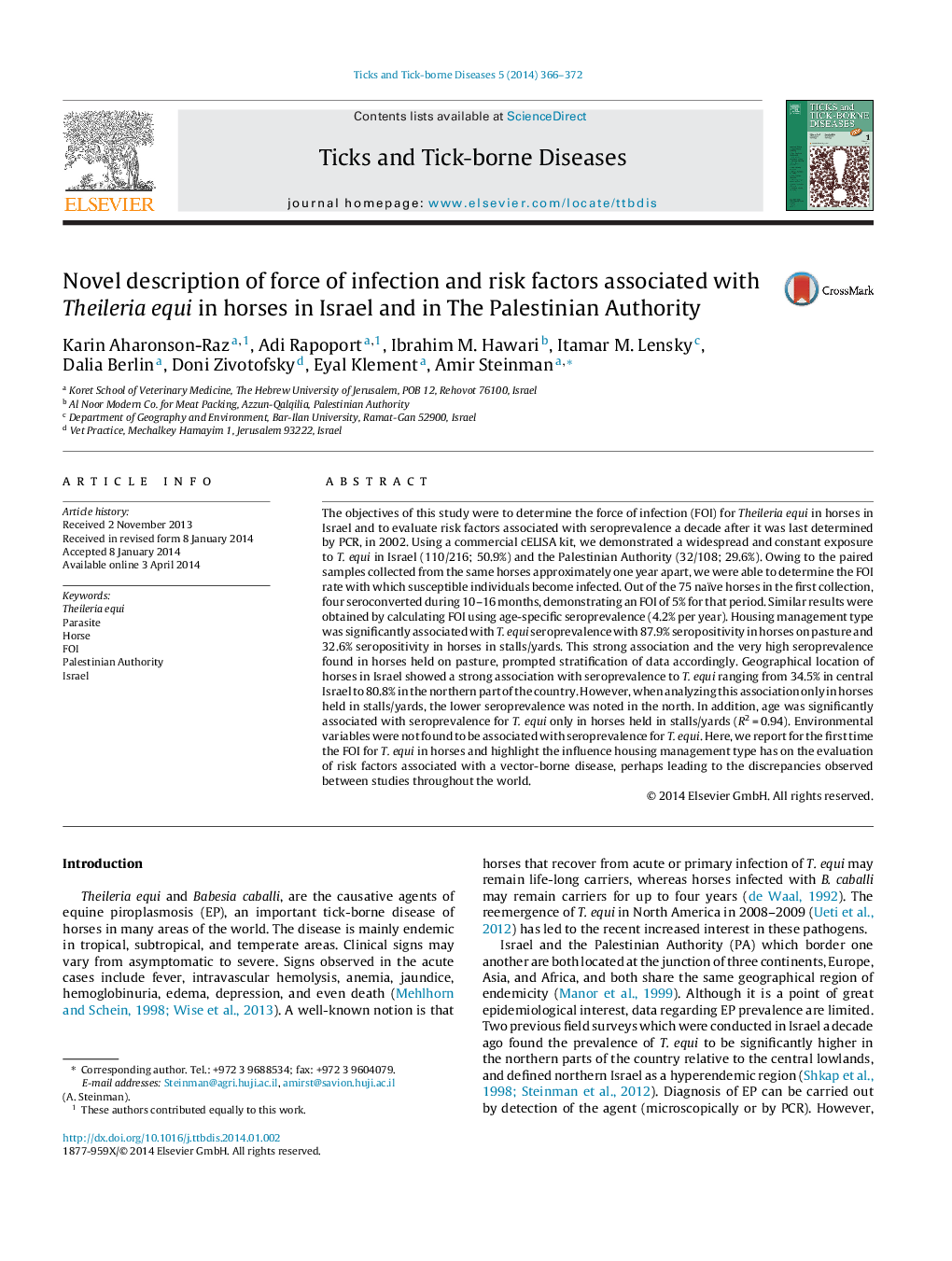| Article ID | Journal | Published Year | Pages | File Type |
|---|---|---|---|---|
| 5807317 | Ticks and Tick-borne Diseases | 2014 | 7 Pages |
The objectives of this study were to determine the force of infection (FOI) for Theileria equi in horses in Israel and to evaluate risk factors associated with seroprevalence a decade after it was last determined by PCR, in 2002. Using a commercial cELISA kit, we demonstrated a widespread and constant exposure to T. equi in Israel (110/216; 50.9%) and the Palestinian Authority (32/108; 29.6%). Owing to the paired samples collected from the same horses approximately one year apart, we were able to determine the FOI rate with which susceptible individuals become infected. Out of the 75 naïve horses in the first collection, four seroconverted during 10-16 months, demonstrating an FOI of 5% for that period. Similar results were obtained by calculating FOI using age-specific seroprevalence (4.2% per year). Housing management type was significantly associated with T. equi seroprevalence with 87.9% seropositivity in horses on pasture and 32.6% seropositivity in horses in stalls/yards. This strong association and the very high seroprevalence found in horses held on pasture, prompted stratification of data accordingly. Geographical location of horses in Israel showed a strong association with seroprevalence to T. equi ranging from 34.5% in central Israel to 80.8% in the northern part of the country. However, when analyzing this association only in horses held in stalls/yards, the lower seroprevalence was noted in the north. In addition, age was significantly associated with seroprevalence for T. equi only in horses held in stalls/yards (R2Â =Â 0.94). Environmental variables were not found to be associated with seroprevalence for T. equi. Here, we report for the first time the FOI for T. equi in horses and highlight the influence housing management type has on the evaluation of risk factors associated with a vector-borne disease, perhaps leading to the discrepancies observed between studies throughout the world.
